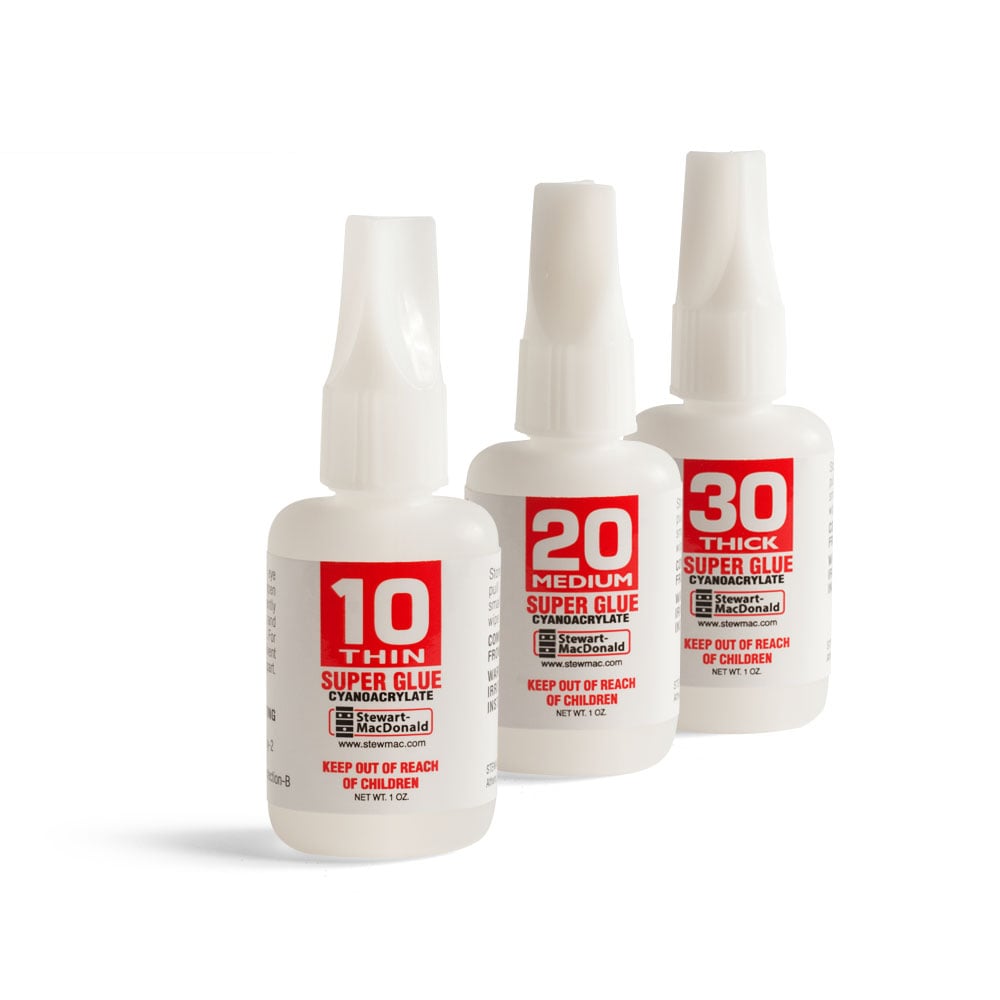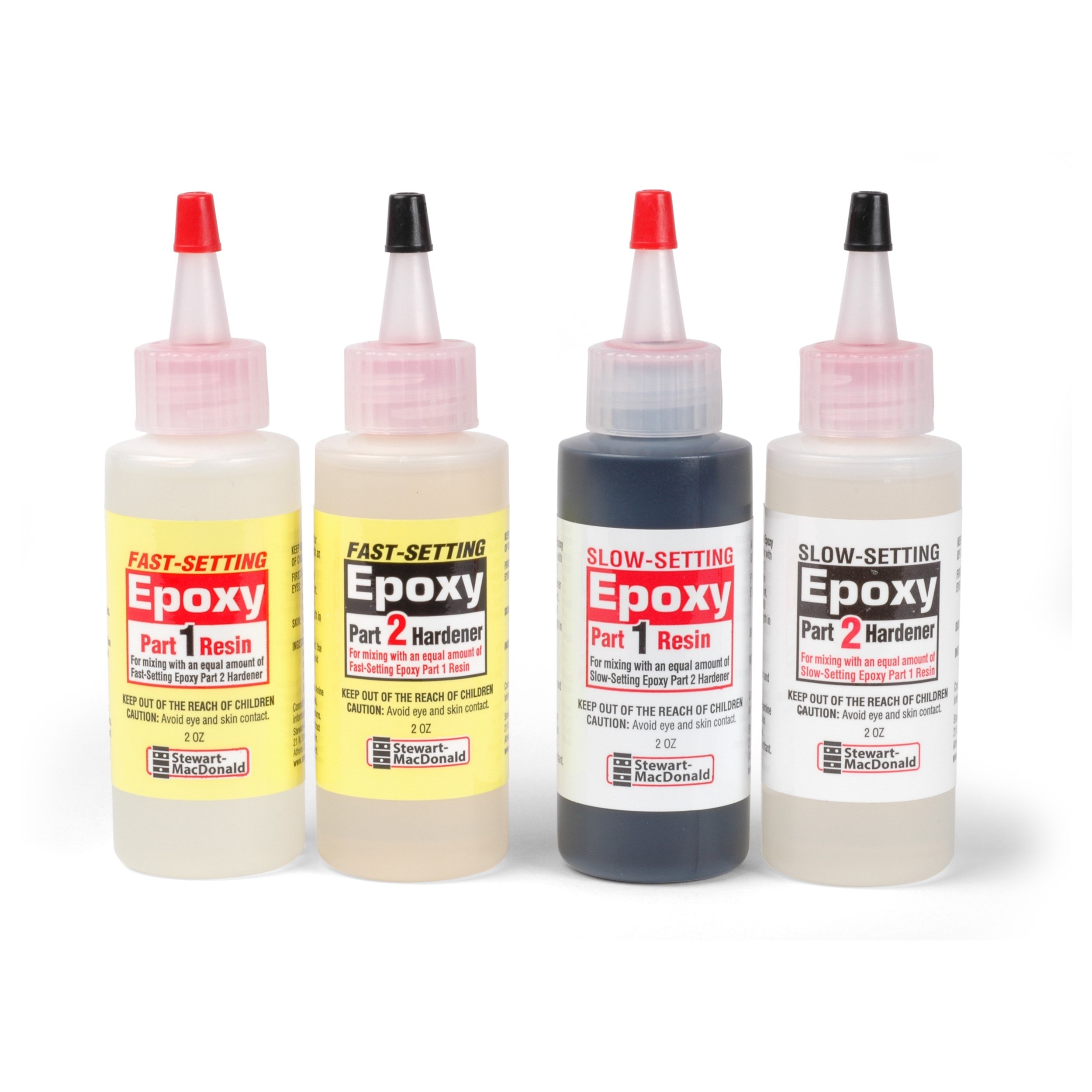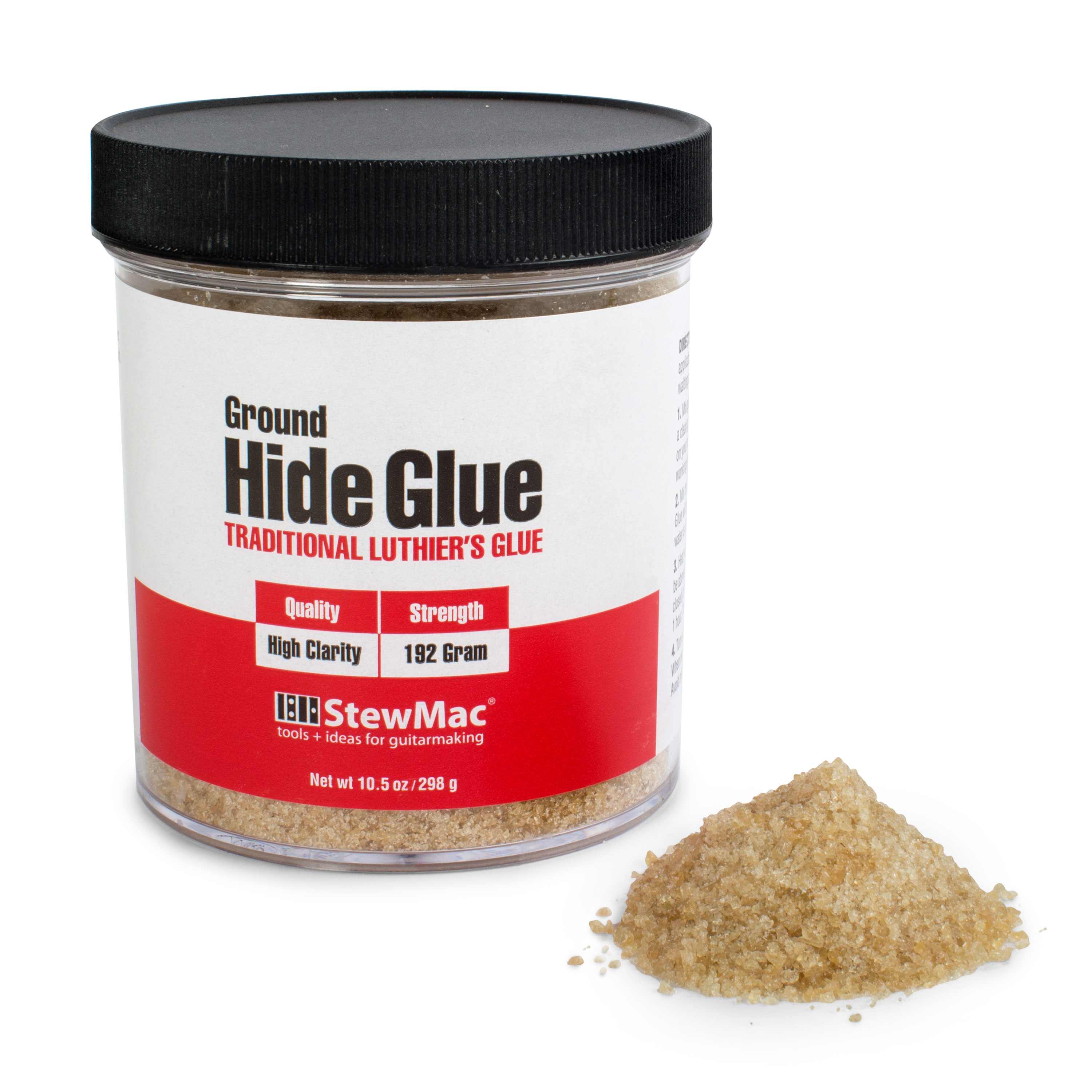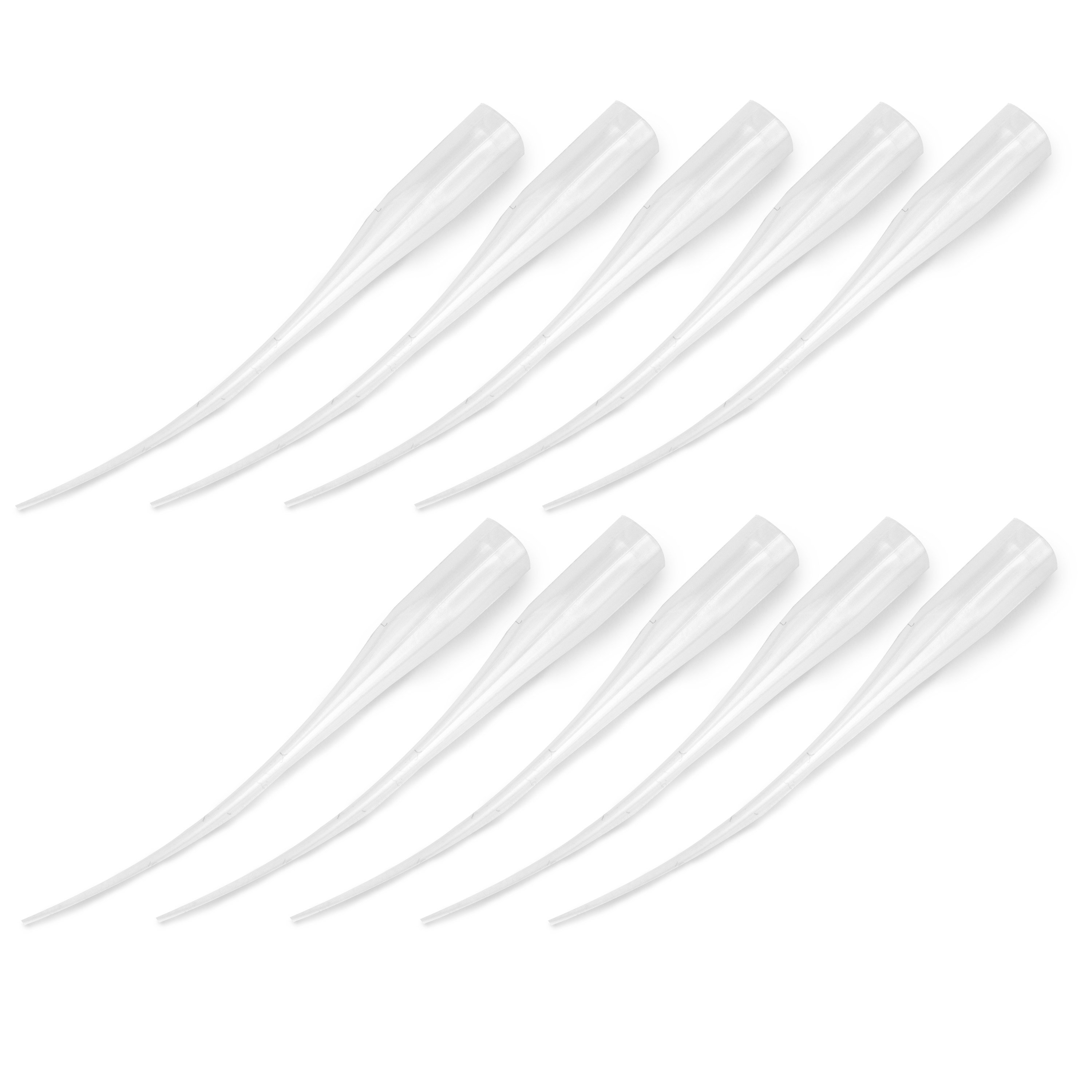How to use glue for guitar frets
Issue 319 December 02, 2018
Should you use glue when seating frets in a fingerboard? Which glue for which job? Erick Coleman gives clear answers.
- Using glue vs. no glue
- Superglue: two techniques
- Thoughts about using epoxy
- Water-based glues like Titebond
Video Transcription
[on-screen text reads: StewMac tools + ideas for guitarmaking. How to Use Glue for Guitar Frets]
Erick Coleman: We get a lot of questions from customers about installing frets and a popular question is, "Do I need to use glue when I'm doing fret job?" With a proper fitting slot, you can install frets without glue. And they very well might be seated the entire life of the instrument. So you don't really need to, but we like to. There's a few reasons for that. If you don't use glue on the installation, it is possible that the frets could work themselves up out of the slot a little bit over the course of the lifetime of the instrument. Not a lot, maybe just enough to cause it to fret out or buzz real bad. But what the glue does is it fills the slot. It surrounds the barbs and the tang and it just helps hold everything in place a little better than if the glue wasn't there. But the main reason we like to use glue in the shop is better tone. When that void between the bottom of the fret tang and the bottom of the fret slot is filled, that offers a better transmission of vibration. We just like the way it sounds.
The next part of that question almost always is, "Well, which glue do I use?" There's several options, and I'm going to show you a few of those right now.
Option one: Super glue
Probably the most popular glue for fretting is super glue [on-screen text reads: StewMac Super Glue - stewmac.com]. People love instant adhesives because they dry fast. If you've got a busy shop, you could knock out four or five fret jobs in the course of the day. Not have to wait overnight for any kind of glue to dry. So that's a big plus right there. One of the big downsides though, is you really have to be careful and plan for your cleanup. You don't want the squeeze-out drying on the fingerboard or running around the back of the neck or anything like that. So you have to pay attention, wax off the board, clean up your squeeze-out as soon as it comes out so it doesn't dry. Some ways that we like to use super glue is, one, just put it directly into the slot before you install the fret [on-screen text reads: Whip Tips - stewmac.com]. So in this case, I've got number 20, squirt it into the slot, and then I'm hammering that fret in [on-screen text reads: Deadblow Fretting Hammer - stewmac.com]. Wipe off the squeeze-out and move on to the next fret.
Another method is to wick underneath frets that have already been installed. Wax off, both sides of the fret, take the number 10 super glue and just run a very small amount along the edge of that fret. And if you look closely, you'll see it wick underneath the fret into the slot. Sometimes it'll even come out the other side. Another method, after the frets are installed, but before they're trimmed, turn the neck up on its end. I'll go down the neck with number 20 super glue and I'll just put a little dab of glue into each slot. And if you look closely, you'll be able to see gravity pulling that glue down into the slot. So the glue is running down the slot underneath the fret. I'll take it, I'll flip it over, I'll do the same thing to the other side. Eventually those glue paths are going to meet and they're going to stop. I'll go back and forth a couple times until I notice that the glue is no longer sinking into the slot. And when I see that, then I'll call it quits.
Option two: Epoxy
Epoxies are very popular for fretting, for the same reason that super glue is [on-screen text reads: StewMac Epoxy - stewmac.com]. If you use a fast setting epoxy, it'll dry real quick and you can move on with the job and knock it out real fast. One of the things against it is it's two parts, so you got to mix it. It's messy to work with. It's gooey and funky. So you want to tape off your fingerboard [on-screen text reads: Binding Tape - stewmac.com], pack the glue into the slot, you press the fret in. I like to clamp it down with the jaws clamp [on-screen text reads: Jaws Fret Press - stewmac.com] and just let it sit for five or so minutes to help the glue set up. Makes it easier to clean up. If you go to clean it up right after you press it in, it's messy and stringy, but if you let it set up just a little bit, it just wants to peel off the fingerboard and the side of the fret.
Option three: Water-soluble glues
Last, we're going to talk about water soluble glues. They include things like original, tight bond, fish glue, and ground hide glue. One thing in favor of using water soluble glues, is they're very easy to clean up. If you get squeeze-out onto the fingerboard or coming out the sides of the slots, just a little bit of warm water and you clean it right up and you're good to go. One of the downsides of it is you will need to clamp these frets to allow them to cure overnight. The water soluble glues can be a little slippery. And so even though you seat the fret really nicely, by the time you make your way down to the end of the neck, it might pop up out of the slot a little bit. So to ensure they stay totally seated, you'll want to clamp them down with the radius block [on-screen text reads: Aluminum Radius-Sanding Beam - stewmac.com] or rods or whatever your preferred method is and let those guys sit overnight. So it's not going to be a fast fret job. It's not something you're going to be able to whip out in one day.
Hopefully I've given you some good ideas to work with. If you're using a gluing technique that we haven't covered here, please email those to us too. We'd like to hear what you're doing to glue in frets.




